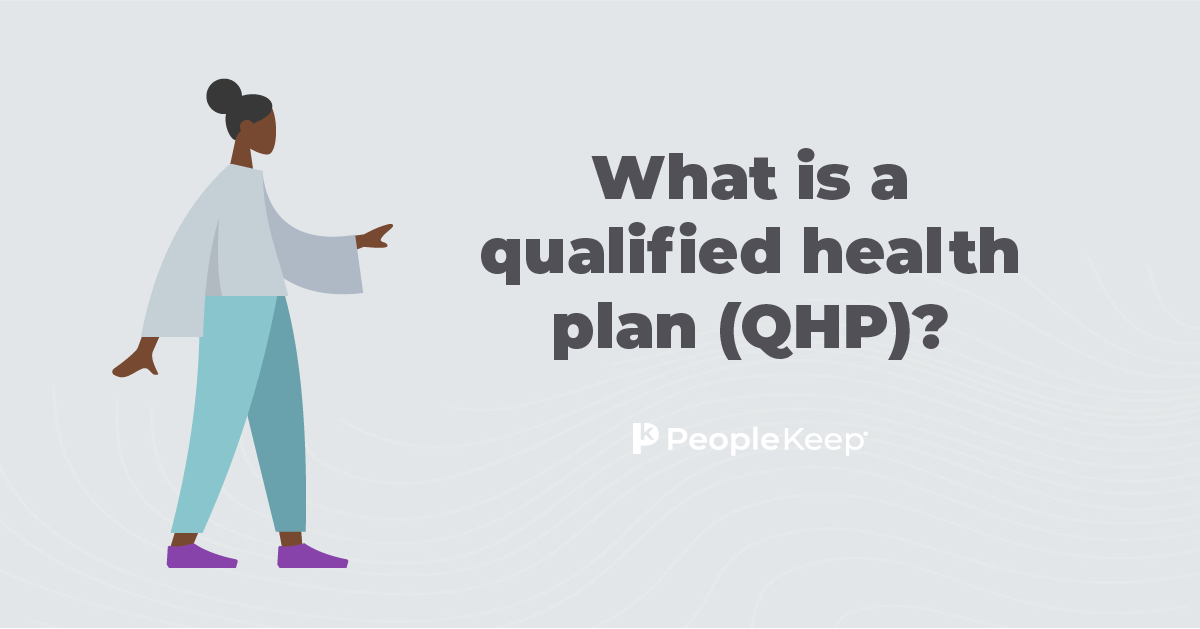What is a catastrophic health insurance plan?
By Holly Bengfort on September 19, 2024 at 8:00 AM
Healthcare costs continue to rise, making it challenging for people to find affordable coverage. In response to this, catastrophic health plans have emerged as an alternative option for relatively healthy people who are primarily seeking coverage in case of major medical events.
Catastrophic health insurance plans provide a safety net for those who want to protect themselves from high medical bills in the event of severe illness or injury. These health plans1 meet all the requirements for qualified health plans (QHPs). But, they only cover three primary care visits per year before you hit your deductible. While they may not offer the same level of coverage as traditional health plans, they can be a viable option for some people—provided they’re eligible to enroll in this type of coverage.
In this article, we'll explore how catastrophic health plans work and why you might consider purchasing one on the Health Insurance Marketplace.
In this blog post, you'll learn the following:
- Why catastrophic plans are often the cheapest form of health coverage.
- Who benefits from catastrophic health insurance coverage.
- If a catastrophic health plan qualifies for reimbursement with an HRA.
What tier of health insurance coverage are catastrophic health plans?
When purchasing individual health coverage, it's important to understand the different metal-level plans. The Affordable Care Act (ACA) requires plans on the health insurance exchanges to fit into four levels of coverage. These levels are also known as the "metallic tiers" or "health coverage tiers."
All Marketplace plans offer coverage for the ten essential health benefits:
- Ambulatory patient services
- Emergency care services
- Hospitalization
- Pregnancy, maternity, and newborn care
- Mental health and substance use disorder services
- Prescription drugs
- Rehabilitative and habilitative services and devices
- Laboratory services
- Preventive care services and wellness services, including chronic disease management, immunizations, and screenings
- Pediatric services, including oral and vision care
A metal tier with a higher premium cost results in the health insurance company paying for a greater share of your medical expenses. But, a lower premium may result in higher out-of-pocket maximums.
The health plans ranked from lowest to highest monthly premium cost are:
- Bronze plans
- Silver plans
- Gold plans
- Platinum plans
This categorization has no impact on the quality of care provided.
Each metallic tier offers different plan types, such as health maintenance organization (HMO) or preferred provider organization (PPO) plans. These plans dictate where you can get comprehensive care and what you'll pay for medical services and medications.
While bronze plans are the cheapest option for most individuals, some people can get a catastrophic health plan. Catastrophic health plans fall below the bronze-level tier. This type of plan typically has much lower monthly costs and higher deductibles than a bronze-level plan. Like the metal tier plans, catastrophic plans cover certain preventive services at no cost.
How do catastrophic plans work?
A catastrophic health plan provides coverage for serious and costly medical events. It's usually meant for generally healthy individuals who don't need frequent medical care. Catastrophic plans offer high plan deductibles at the maximum out-of-pocket limit. They may also have no copayments or coinsurance, meaning you'll have a significant amount of out-of-pocket spending before the insurance coverage kicks in. However, once you reach the deductible, the plan usually covers 100% of essential health benefits.
How much does catastrophic health coverage cost?
Forbes Advisor2 found the average monthly premium for catastrophic health insurance for a 27-year-old is $260 in 2024. The average is $443 for a 50-year-old.
According to KFF3, the annual deductible for covered services in 2024 is $9,450 for an individual. The amount is twice that for a family policy under a catastrophic policy. Keep in mind that plan options and plan costs will vary based on your location and whether you sign up for a plan on a public or private exchange.
Who's eligible for catastrophic coverage?
Those looking to enroll in catastrophic coverage must meet specific eligibility requirements. Catastrophic plans are typically available to people younger than 304 since they're less likely to experience medical issues. These types of plans aren't commonly offered to older individuals or those who require regular medical care for a chronic health condition since the high deductible can be a significant financial burden.
Catastrophic insurance plans are also available to those who qualify for a financial hardship exemption or affordability exemption5. If the cheapest plan you can get, either through the Marketplace or your job, costs more6 than 7.97% of your income, you can get an affordability exemption.
You may also qualify for a financial hardship exemption. This includes any of the following life situations:
- If only one or no insurers are available on the Marketplace in your area
- You faced homelessness, eviction, or foreclosure
- Your utility company sent you a shut-off notice
- You experienced domestic violence
- You filed for bankruptcy
- A family member died
- A fire, flood, or other disaster caused damage to your property
- You have substantial debt due to unpaid medical expenses
- You incurred unexpected increases in expenses from caring for a family member
You may also qualify if CHIP or Medicaid denies coverage for your dependent child when someone else must provide medical support due to a court order. If you’re ineligible for Medicaid because your state doesn’t expand the program, you may also qualify.
Because of these requirements, nearly 59 thousand7 people enrolled in a catastrophic health plan on the public exchanges in 2024. That's the fewest of any plan type.
Why should you choose a catastrophic plan?
Now, you're probably wondering why someone would opt for a catastrophic health plan with high out-of-pocket costs. Here are a few reasons why this type of plan might work for you.
1. Lower monthly payments
One of the biggest advantages of a catastrophic health plan is its affordability. Premiums for such plans are generally lower compared to other medical insurance options. This can be particularly attractive if you are young, healthy, and don't need frequent medical care.
2. Protection against major medical expenses
While catastrophic health plans have high deductibles, they offer protection against emergency medical care. If you were to face a serious illness, injury, or hospitalization, the plan would cover most of the expenses once you reach the deductible. This coverage option can be a valuable safety net, especially if you're concerned about potential major medical costs.
3. Access to preventive services
Even though this type of health insurance comes with higher deductibles, catastrophic health plans still provide coverage for preventive care without requiring you to meet the annual deductible first.
Why catastrophic health plans may not be right for you
Here are a couple of reasons why this type of plan might not work for you.
1. They don't work with health savings accounts (HSAs)
Catastrophic health plans aren't eligible8 for health savings accounts (HSAs). HSAs allow you to save pre-tax dollars to pay for qualified medical expenses. The contributions you and your employer make to an HSA are tax-deductible, and they can cover your out-of-pocket costs. This makes them a popular option for saving for future medical expenses.
However, catastrophic health plans aren't HSA-qualified. If you already have an HSA or want to open one, you'll need to choose a different type of high-deductible health plan.
2. They come with high deductibles
Because catastrophic plans come with high deductibles equal to the out-of-pocket limit for the plan. This means you'll pay more out-of-pocket in the event of a medical emergency or unexpected care.
Can you use premium subsidies to buy a catastrophic plan?
No; you can't use premium subsidies9 or cost-sharing subsidies to purchase a catastrophic plan. Based on your income, you may qualify for a subsidy that can go towards a metal-rated plan. This can make it more cost-effective than a catastrophic plan.
Can you use a catastrophic health plan with an HRA?
If your employer offers you a health reimbursement arrangement (HRA), such as a qualified small employer HRA (QSEHRA) or individual coverage HRA (ICHRA), you may be wondering if your catastrophic plan qualifies for reimbursement. A catastrophic plan is a qualified health plan with minimum essential coverage (MEC). This means you can participate in the benefit. Your employer can reimburse you for your health insurance premiums and out-of-pocket medical expenses tax-free.
Conclusion
A catastrophic health insurance plan offers financial protection against major medical emergencies. While these types of plans have lower monthly premiums, they also come with higher deductibles. That means catastrophic health insurance policies aren't for everyone. This low-cost option is best for people who are generally healthy and want to protect themselves against unexpected expenses. However, those who require regular medical care for routine treatments may find that another type of plan is a better fit for their needs.
This post was originally published on November 15, 2023. It was last updated on September 19, 2024.
Check out more resources
See these related articles

What is actuarial value?
Learn what actuarial value is and how it measures the percentage of healthcare costs a plan covers. Understand its role in health insurance choices.

What is a qualified health plan (QHP)?
Learn the ins and outs of qualified health plans (QHPs), including how they’re categorized and how you can enroll in one.

What is a health insurance premium?
A health insurance premium is the amount of money you pay to your insurance provider for your health coverage. Learn more about health insurance premiums here.



